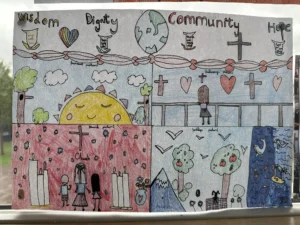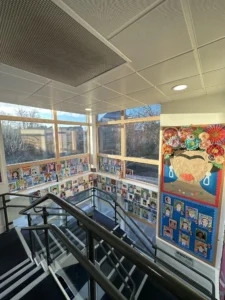Vision Statement
As a young artist in the Blue School, I am entitled to:
- Have the opportunity to use different tools and a broad range of media including ink, paper, collage, clay, paints, pastels & acrylics
- Learn different techniques – eg cutting, sticking, building, printing, painting, sketching, shading and the use of perspective
- Make mistakes, experiment and refine my skills
- Learn how to evaluate my work and have the opportunity to make a better version
- Be exposed to a broad range of artists and designers and understand their historical and social context
- Access work in class, regardless of my ability or need
- Understand art in the context of my own life and culture – including artists with links to our local area.
- Express myself in a visual way without fear of censure
- Have a curriculum that focuses more on skills learnt and less on outcome
- Stretch my imagination and challenge myself
- Make a mess! (and clear it up again)
- Have fun


